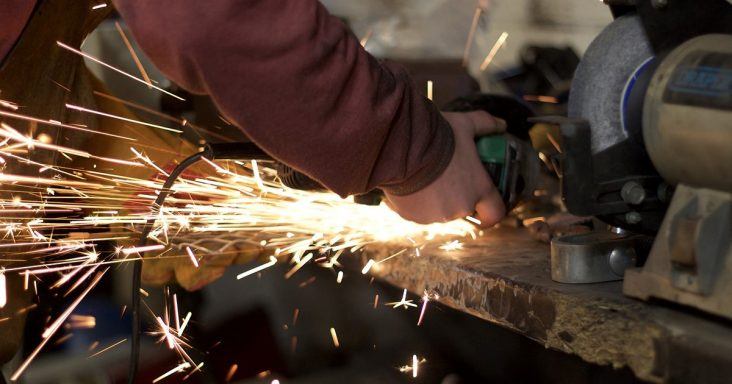Manufacturing sector activity rose in June; PMI at 52.6%
by July 1, 2020 10:52 am 463 views

Economic activity in the manufacturing sector increased as the overall economy grew for the second consecutive month in June following one month of contraction in April, according to the Institute for Supply Management (ISM).
ISM released Wednesday (July 1) the Manufacturing ISM Report on Business showing the Purchasing Managers’ Index (PMI) rose 9.5 percentage points to 52.6% in June, from May. The PMI indicated the overall economy expanded for the second consecutive month. The April contraction in the economy ended 131 consecutive months of growth.
The new orders index rose 24.6 percentage points to 56.4% in June, from May. The production index rose 24.1 percentage points to 57.3%. The backlog of orders index increased 7.1 percentage points to 45.3%. The employment index increased by 10 percentage points to 42.1%. The supplier deliveries index fell 11.1 percentage points to 56.9%.
The inventories index rose 0.1 percentage point to 50.5% in June, from May. The prices index increased by 10.5 percentage points to 51.3%. The new export orders index rose 8.1 percentage points to 47.6%. The imports index increased by 7.5 percentage points to 48.8%.
“June signifies manufacturing entering an expected expansion cycle after the disruption caused by the coronavirus (COVID-19) pandemic,” said Timothy Fiore, chair of the ISM Manufacturing Business Survey Committee. “Comments from the panel were positive, reversing the cautious trend which began in March. The manufacturing sector is reversing the heavy contraction of April, with the PMI increasing month-over-month at a rate not seen since August 1980, with several other indexes also posting gains not seen in modern times.”
Demand increased with the new orders increase rising, supported by a softer contraction in the new export orders index, Fiore said. Customers’ inventories index returned to a level that’s positive for future production. The backlog of orders index moderated but has continued to contract. Consumption, which is measured by the production and employment indexes, contributed to a combined 34.1-percentage point increase to the PMI as most companies’ employees returned to work in June. Inputs, which comprise supplier deliveries, inventories and imports, fell amid a decline in supplier delivery issues and a rise in import levels. Inventory levels were in parity with supply and demand. Inputs contributed to an 11-percentage point decrease to the PMI but were more than offset by the demand and consumption improvement. Prices rose again but at low levels, and this supported a positive outlook.
“As predicted, the growth cycle has returned after three straight months of COVID-19 disruptions,” Fiore said. “Demand, consumption and inputs are reaching parity and are positioned for a demand-driven expansion cycle as we enter the second half of the year. Among the six biggest industry sectors, food, beverage and tobacco products remains the best-performing industry sector, and computer and electronic products and chemical products returned to respectable growth. Transportation equipment and fabricated metal products continue to contract but at much softer levels.”
A respondent in the food, beverage and tobacco products industry noted issues in keeping up with demand related to COVID, and the industry is up 62.5% from a year ago. The industry has experienced supply issues throughout the supply chain, and the supply could be affected again if another COVID wave hits in the fall.
A respondent in the machinery industry said May was the bottom with regard to orders. June has been stronger, and orders have risen.
A respondent in the wood products industry foresees the industry as more resilient than others because of potential migration from larger cities and an undersupplied housing market.
“The building industry continues to defy expectations, as we continue to rebound stronger from the previous month,” the wood products respondent said. “Being an essential business across most states and a surge in DIY projects has fueled the industry forward.”
LABOR PRODUCTIVITY
The wood products industry was one of several manufacturing industries that experienced a decline in labor productivity in 2019, from 2018, according to a new study by the U.S. Bureau of Labor Statistics (BLS). Productivity in the industry fell 3.5% in 2019, from 2018.
Labor productivity decreases were widespread in manufacturing in 2019, with declines in 54 of the 86 industries the BLS studied. Of the 51 industries in durable manufacturing, 31 had productivity decreases in 2019. Productivity fell the most in the HVAC and commercial refrigeration equipment industry.
Of the 35 nondurable manufacturing industries, 23 had productivity declines. The other leather products industry reported the largest decline, with a 13.1% decrease in productivity. All four industries in the mining sector had productivity declines in 2019. The coal mining industry recorded a 6.6% decrease, the largest in the mining sector.
Between 1987 and 2019, labor productivity increased in 83 of the 91 manufacturing and mining industries studied, according to the BLS. Output increased in 58 industries, while hours worked rose in 17. In the 17 industries in which hours worked increased, they rose at a slow pace, at 0.7% annually on average.
